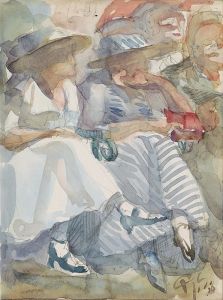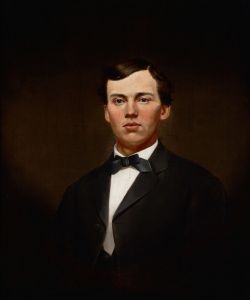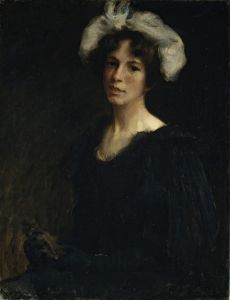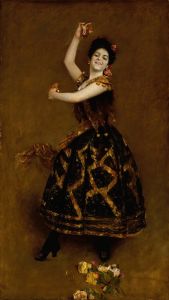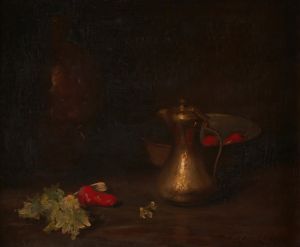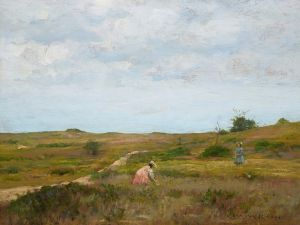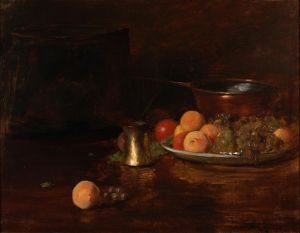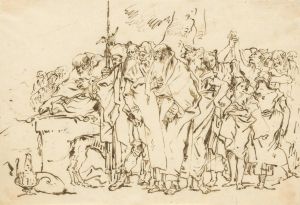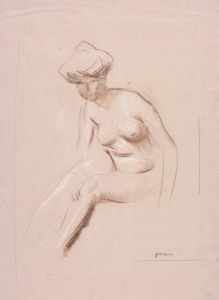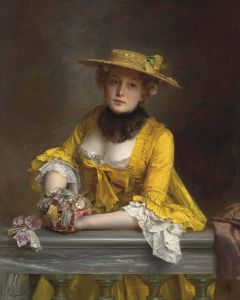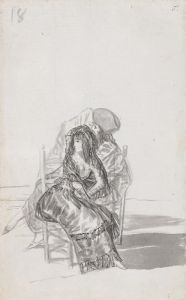
A Friendly Call
A hand-painted replica of William Merritt Chase’s masterpiece A Friendly Call, meticulously crafted by professional artists to capture the true essence of the original. Each piece is created with museum-quality canvas and rare mineral pigments, carefully painted by experienced artists with delicate brushstrokes and rich, layered colors to perfectly recreate the texture of the original artwork. Unlike machine-printed reproductions, this hand-painted version brings the painting to life, infused with the artist’s emotions and skill in every stroke. Whether for personal collection or home decoration, it instantly elevates the artistic atmosphere of any space.
"A Friendly Call" is an oil painting created in 1895 by the American artist William Merritt Chase, a prominent figure in the late 19th and early 20th-century art scene. Known for his contributions to Impressionism and his role in advancing American art, Chase painted this work during a period when he was exploring themes of domestic life and social interaction.
The painting depicts an elegant interior scene featuring two women engaged in conversation. One woman is seated on a sofa, while the other stands nearby, suggesting that she has just arrived for a visit. The setting is a well-appointed parlor, with detailed furnishings and decor that reflect the refined tastes of the time. The composition is notable for its use of light and color, hallmarks of Chase's style, which he employed to create a sense of warmth and intimacy. The interplay of textures, from the women's clothing to the upholstery and drapery, further enhances the visual richness of the scene.
"A Friendly Call" is often celebrated for its ability to capture the social customs and domestic environments of the Gilded Age in America. The painting exemplifies Chase's skill in portraying the subtleties of human interaction and his keen eye for detail. It also reflects the influence of European Impressionism, which Chase encountered during his studies abroad, particularly in Munich and Paris.
The artwork is part of the collection of the National Gallery of Art in Washington, D.C., where it continues to be appreciated for its artistic and historical significance. It serves as a window into the cultural and social dynamics of its era, as well as a testament to William Merritt Chase's mastery as a painter.





